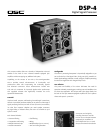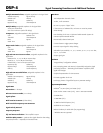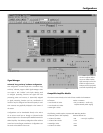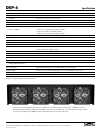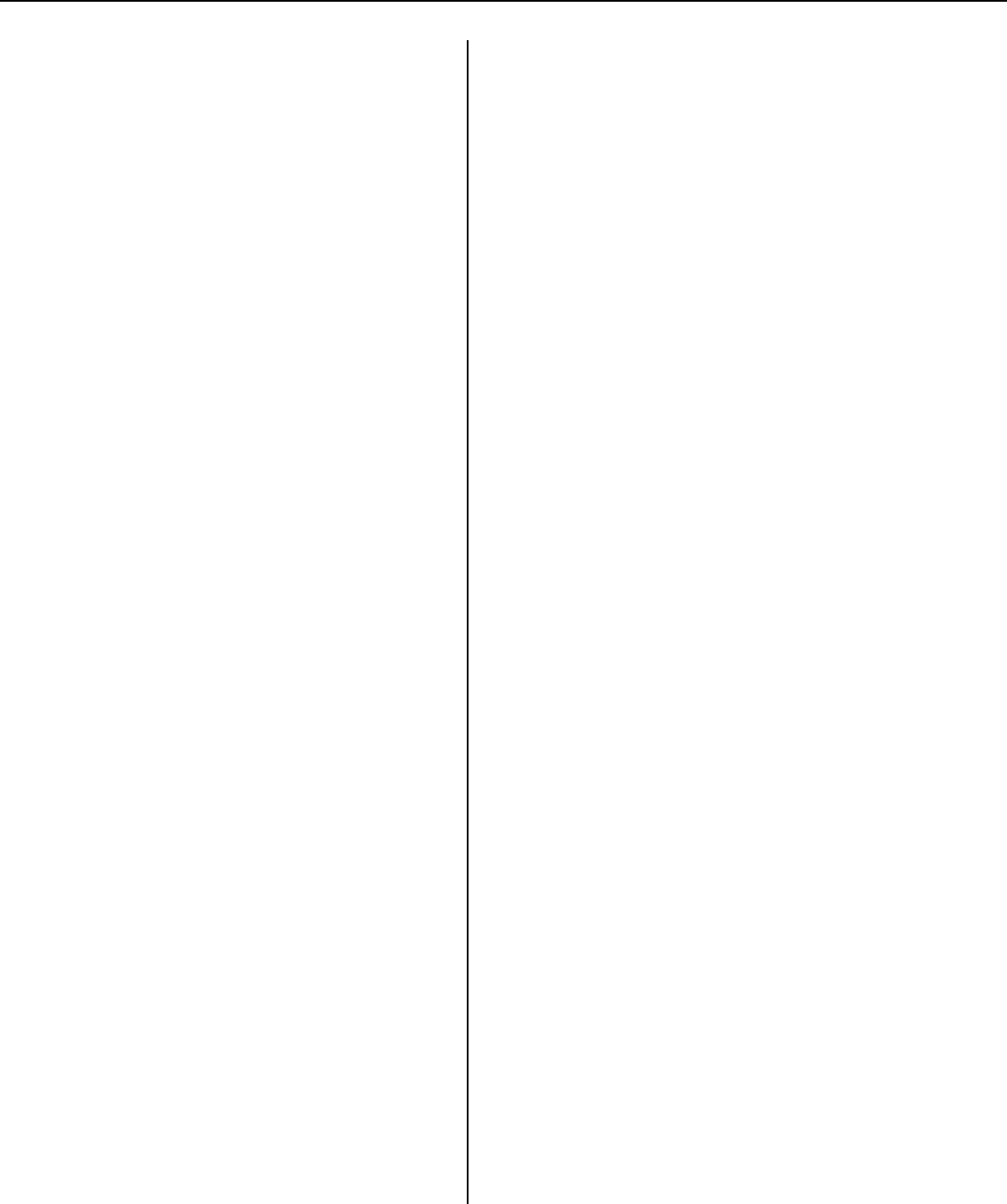
Multiple Parametric Filters, assignable anywhere in the signal chain:
Variable Frequency Bypass all EQs
Variable Gain Add EQ
Variable Q Delete EQ
Bypass one EQ Show Response
Multiple Delays, assignable anywhere in the signal chain:
20.83 µsec incremental
910 msec maximum (total of all delays)
Compressor, assignable anywhere in the signal chain:
Gain Release Time
Threshold Show Response
Ratio Bypass
Attack Time
Output Peak Limiter, assignable anywhere in the signal chain:
Gain Release Time
Threshold Show Response
Attack Time Bypass
High and Low-Pass Crossover Filters, assignable anywhere in the
signal chain:
Butterworth 6, 12, 18, 24 dB per octave slope
Bessel 6, 12, 18, 24 dB per octave slope
Linkwitz-Riley 12 and 24 dB per octave slope
Bypass one EQ Delete EQ
Bypass all EQ’s Show Response
Add EQ Cutoff Frequency
High and Low-Pass Shelf Filters, assignable anywhere in the
signal chain:
Variable Corner Frequency Bypass all EQs
Variable Gain Add EQ
Variable Q Delete EQ
Bypass one EQ Show Response
Signal Mute
Attenuation 0.1 dB steps
Mix Post Crossover Audio (2➞1 Mixer)
Signal Splitter
Built-in Noise Generator (Pink & White)
Built-in Variable Frequency Tone Generator
Signal Polarity Reversal
Frequency Response
Clip and Protect Indication of the amplifier’s output
Predictive Delay Feature — produces less signal distortion than analog
compressor/limiters — especially for fast attack times
Hardware
Two independent channels of DSP
48 kHz, 24-bit converters
No turn on pops or “zipper” noise
If the memory or hardware fails, unit turns on muted to prevent
driver damage
Host interface via RS-232 or QSControl Audio Network System via
CM16a Amplifier Network Monitor
Electronically balanced XLR inputs
Contact closure to trigger preset changes
Post DSP output signal for daisy chaining
Selectable input sensitivity: 1.5, 4, 9, 18 Vrms; 6, 14.5, 21.5, 27.5
3.5, 12, 19, 25 dBV
Output signal gain
Software
“Drag-and-drop” configuration software
DSP processing power and memory is dynamically assigned to signal
processing functions — eliminating the limitations imposed by fixed
signal chain designs
Graphical representation of DSP resources
Firmware upgrades via RS-232
Hard copy printout of signal flow layout or parameter settings
System Requirements
Windows
®
98, NT4 (SP6), and 2000 (SP1)*
SVGA monitor at 800 x 600 (min.); 1024 x 768 recommended
CD-ROM drive
32 MB RAM (min.)
10 MB free hard disk space (min.)
Available RS-232 COM port
Male to female 9-pin serial cable (for programming)
* Windows Me not supported
DSP-4
Signal Processing Functions and Additional Features
dBu;



